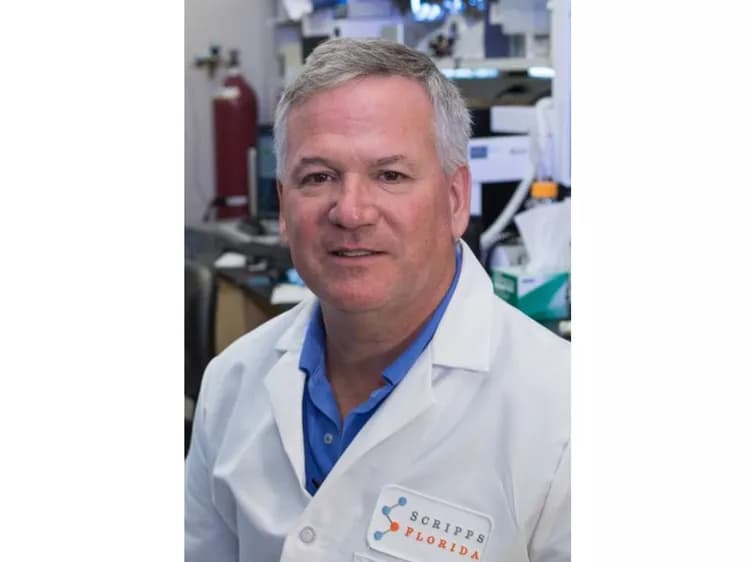
New Drug Candidate Could Treat Both Type 2 Diabetes, Bone Loss
In addition to its more obvious ills, type 2 diabetes is a condition closely associated with bone fractures, increasing the risk of fractures twofold. To make matters worse, certain anti-diabetic drugs further increase this risk, particularly in postmenopausal women, severely limiting their treatment options.
A new study, co-led by Patrick R. Griffin, a professor on the Florida campus of The Scripps Research Institute (TSRI), and B. Lecka-Czernik, a professor at the University of Toledo, has shown that a new class of drug candidates developed at TSRI increases bone mass by expanding bone formation (deposition of new bone) and bone turnover (a normal process of replacement of old bone). A proper balance of these two processes is critical to healthy bone maintanence), and this balance is frequently negatively affected in diabetic patients.
The result is a new dual-targeting drug candidate--or, as Griffin describes, "one drug addressing multiple therapeutic indications"--that could treat both diabetes and bone disease. The compound has been referenced as "SR10171."
The study was published recently online ahead of print by the journalEBioMedicine.
Diabetes affects more than 29 million people in the United States, according to a 2012 report from the American Diabetes Association. Between 2010 and 2012, the incidence rate was about 1.7 to 1.9 million per year, and in 2013, estimated direct medical costs of the disease were $176 billion.
Over the past decade, Griffin and his colleague, TSRI Associate Professor Theodore Kamenecka, have focused on the details of molecules that increase sensitivity to insulin (a hormone that regulates blood sugar). Using newly discovered information, the researchers made significant advances in developing a family of drug candidates that target a receptor known as peroxisome proliferator-activated receptors gamma (PPARγ), a key regulator of stem cells controlling bone formation and bone resorption and a master regulator of fat.
Anti-diabetic drugs known as glitazones (TZDs) target the PPARγ protein, but that interaction leads to severe bone loss and increased fractures. Stem cells in the bone marrow can differentiate either into bone cells or fat cells, and the glitazones drive them to fat at the expense of bone.
But SR10171 is designed to avoid this troubling outcome. In animal models treated with the compound, fat formation in the bone marrow was successfully blocked independent of their metabolic state (healthy or diabetic).
"Using structural biology technigues and rational design synthetic chemistry, SR10171 was constructed to engage the PPARγ protein in a unique way possessing an optimal balance with the receptor's other family member, PPARa, to treat diabetes and, at the same time, improve bone health," Griffin said. "This targeted polypharmacological approach demonstrates that the target isn't the problem if you target it correctly."
The compound increases bone mass by protecting and increasing the activity of bone cells in various stages of normal bone mantanence, utilizing mechanisms that overlap those that regulate whole-body energy metabolism.
"SR10171 improves bone mass regardless of body mass index, normal to obese," Griffin added. "So you could use such a drug to treat osteoporosis whether patients are diabetic or not."
The above post is reprinted from materials provided by Scripps Research Institute. Note: Materials may be edited for content and length.
Disclaimer: DoveMed is not responsible for the adapted accuracy of news releases posted to DoveMed by contributing universities and institutions.
Primary Resource:
Stechschulte, L. A., Czernik, P. J., Rotter, Z. C., Tausif, F. N., Corzo, C. A., Marciano, D. P., ... & Rosen, C. J. (2016). PPARG Post-translational Modifications Regulate Bone Formation and Bone Resorption. EBioMedicine.
Related Articles
Test Your Knowledge
Asked by users
Related Centers
Related Specialties
Related Physicians
Related Procedures
Related Resources
Join DoveHubs
and connect with fellow professionals

0 Comments
Please log in to post a comment.